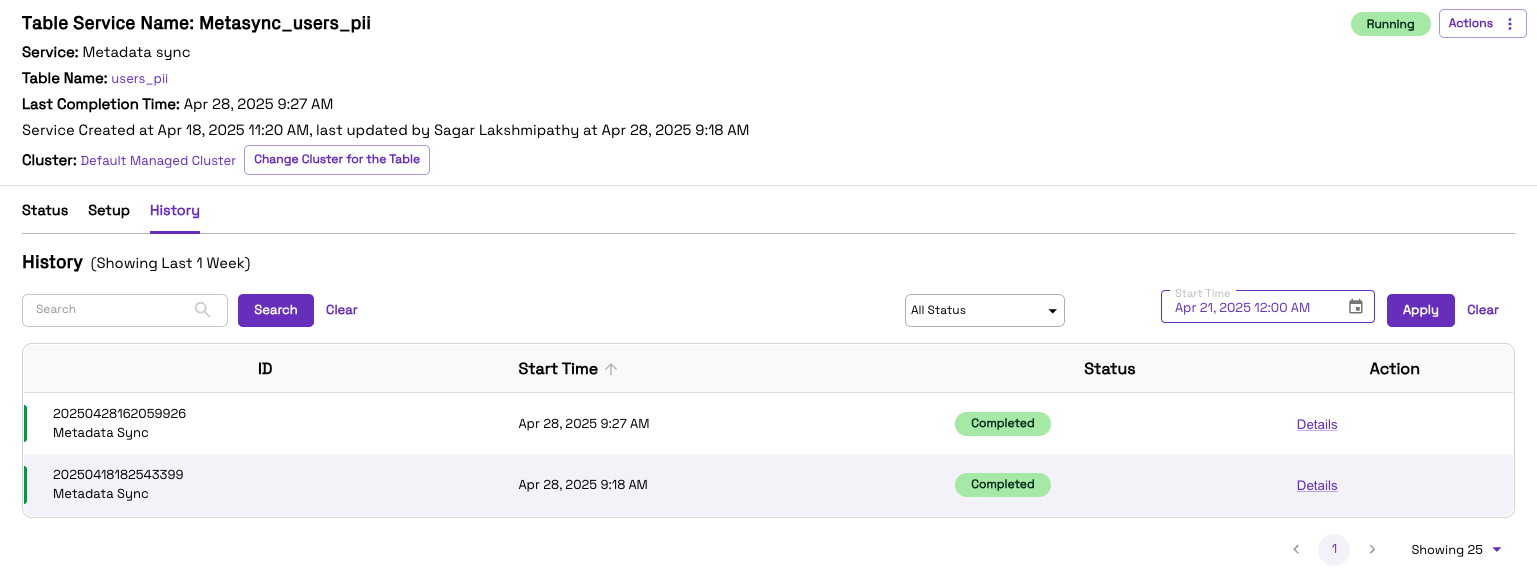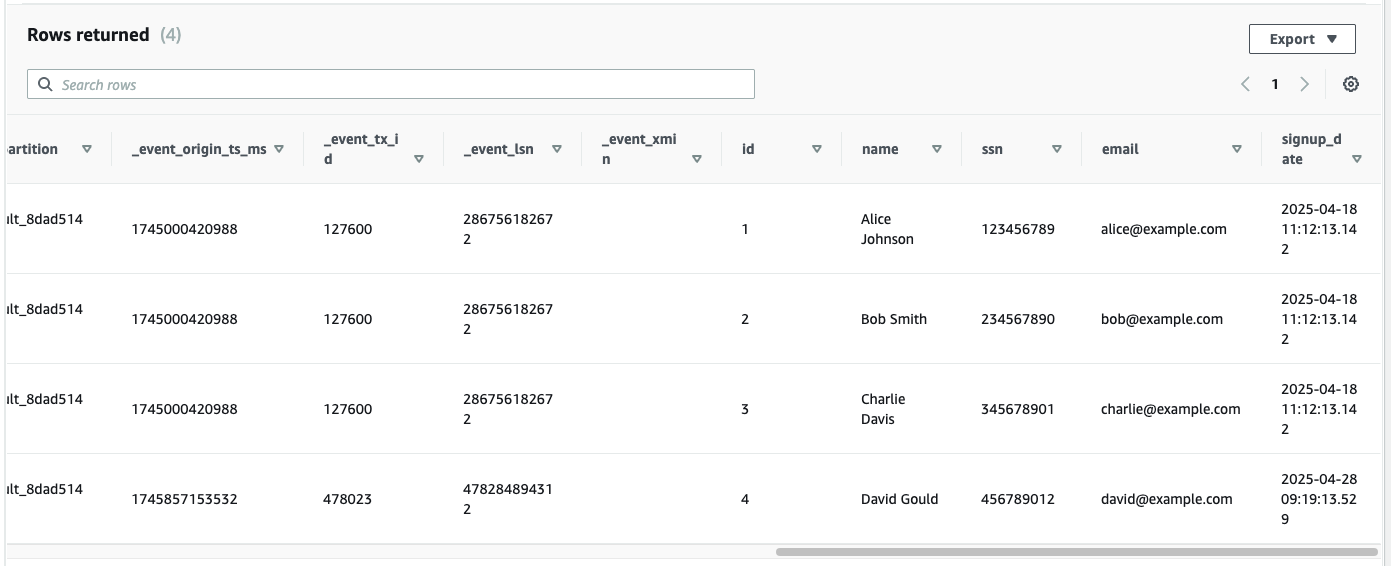Redshift Spectrum Onehouse Integration
Context
This guide outlines how to integrate Onehouse-managed data with Amazon Redshift Spectrum for seamless querying. By setting up a Stream Capture in Onehouse and cataloging data into AWS Glue, users can expose Hudi-managed datasets directly to Redshift Spectrum through an external schema. This allows Redshift to efficiently query Onehouse-managed lakehouse data without needing to move or duplicate it, enabling powerful analytics on live data.
Steps
Onehouse: Create a stream capture
- Follow the steps highlighted in the docs to create a Onehouse Stream Capture
- Make sure you choose AWS Glue Catalog as one of the catalog options. Follow Create Catalog docs to setup this up
- Once the first batch of ingestion is complete, the Metadata Sync service will catalog the data to Glue Data Catalog


AWS: Create external schema
- Upon the first successful Metadata Sync to Glue, the table will be ready to be queried by Redshift Spectrum

- A necessary pre-requisute to query the external tables in Redshift Spectrum is to create a schema
CREATE EXTERNAL SCHEMA IF NOT EXISTS <schema_name>
FROM data catalog
DATABASE '<glue_database_name>'
IAM_ROLE 'arn:aws:iam::<accountId>:role/redshift-glue-s3-full-access-role'
REGION '<region>';
Note1: To work as expected, Redshift needs to have access to Glue Catalog and S3. Make sure you add adequate policies to the Redshift Role.
Note2: Redshift Spectrum’s schema has a 1:1 mapping with Glue Database tables
- So all the tables in
<glue_database_name>database in AWS Glue can be queried from Redshift Spectrum now
AWS: Querying the tables
- This includes queries like
SELECT * FROM <schema_name>.users_pii_ro;
